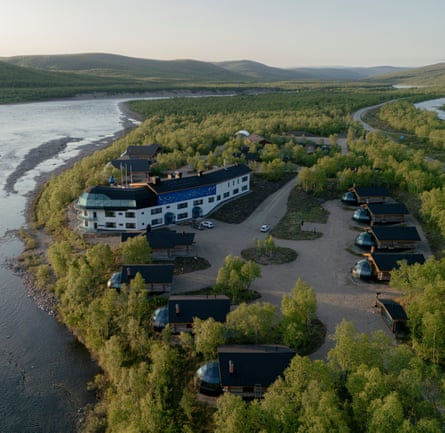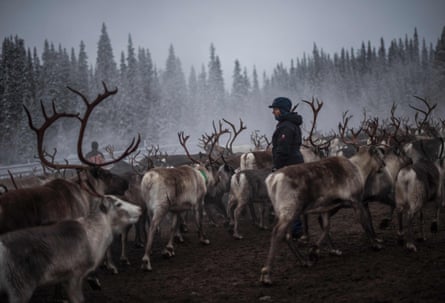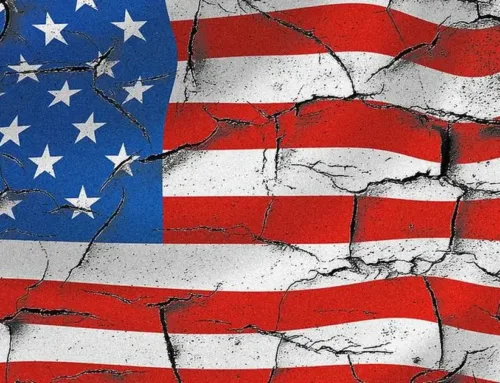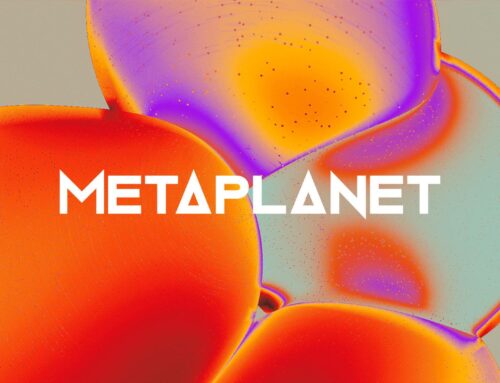The Santa Claus effect: how expanding tourism ate into Lapland’s green space
October 1, 2025
Once upon a time, Lapland was a word that conjured up the home of Santa Claus in the imagination of British children, but increasingly it has become a tourist destination.
Last year, more than 700,000 people came to the region, with 100,000 of them coming from Britain. That number is up 160% compared with 30 years ago.
Soaring tourism is making a substantial footprint on Lapland’s environment. Exclusive analysis shows that around tourist hotspots in Finnish Lapland, green areas equivalent in size to London’s Hyde Park were developed for the purposes of tourism in the five years to 2023. The developments include holiday homes, ski slopes and a virtual reality experience to give tourists who missed the light show another chance to view the aurora borealis.

The extent of the development was uncovered as part of the broader Green to Grey cross-border project – with the Guardian, Arena for Journalism in Europe, Le Monde, the Finnish journalism platform Long Play and eight other news outlets in 11 countries across Europe.
While some expansions are larger in scale, many are smaller-scale string developments consisting of one or two holiday homes. But all are leaving their mark on the region’s pristine landscapes.
The Guardian estimates that 15% of developments in Lapland were tourism-related, jumping to around half in the main tourist hubs.
Lapland, the largest and northernmost region of Finland, became known as the home of Santa Claus in the 1920s, and in the 90s its small capital Rovaniemi (population 65,000) proclaimed itself Santa’s home city. Over the course of the year, now, and particularly in November and December, it receives many times that figure in tourists.
In Rovaniemi, holiday homes have been built for tourists on green spaces that were once parks or forests. Other developments include a water park, a travel agency, a reindeer park, a husky facility and an extension to the existing Santa Claus village.
Beyond the city, in the popular ski resorts of Levi, Ylläs and Saariselkä, expanding tourism has consumed at least 430,000 sq metres of natural landscape since 2018. Farther north, the Utsjoki Arctic Resort was built in an area designated to have national significance. The resort’s owner, Juhani “Jussi” Eiramo, was asked for comment but declined.

Last spring, the municipality of Inari approved 227 cottage plots along the shore of Lapland’s Lake Inari, in one of the remotest corners of Europe. These plots are located in old-growth forests where indigenous Sámi communities have practised reindeer herding for generations.
“What has been planned is completely absurd. Almost all reindeer herders are concerned about this kind of thing,” said Elle Arttijeff, a Sámi reindeer herder, lamenting what amounts to the reversal of a 20-year settlement between the local authority and herders to protect pastures in the area. “It is so terribly stressful and sad.”
A spokesperson for the regional council of Lapland – who noted that a new tourism strategy for 2026 will consider climate change and biodiversity – told the Guardian that the tourism industry in Lapland aims to “grow tourist centres to a critical mass where the conditions for growth would be so good that it would attract more business and vitality to the area”.
However, they acknowledged that the growth of tourism was reflected “in housing prices at the municipal level and this is one of the reasons why there is a serious housing shortage in many areas of Lapland”.
Environmentalists and cultural activists say the rapid expansion of tourism in what is a fragile ecosystem causes irreparable ecological damage, contributes to biodiversity loss and poses a threat to the area’s unique cultural heritage of the Sámi, some of whom still engage in semi-nomadic reindeer herding across the region, which spans large northern parts of Norway, Sweden, Finland, and of the Kola Peninsula in Russia.
The Guardian, along with journalists based in Finland and France, checked hundreds of developments within a 10km radius of Rovaniemi and five other tourist centres, mapping a loss of nature exceeding 2.7m sq metres, half of which is attributable to the tourism sector.
In a region as vast as Lapland, which covers half of Finland, this nibbling away at the landscape by tourism – equivalent to 180 football fields – may seem insignificant. However, “along with logging and mining, the development of recreational activities, such as skiing, are the main threats currently facing Europe’s remaining wilderness areas,” warns Steve Carver, professor of rewilding and wilderness science at the University of Leeds.
Search
RECENT PRESS RELEASES
Related Post



